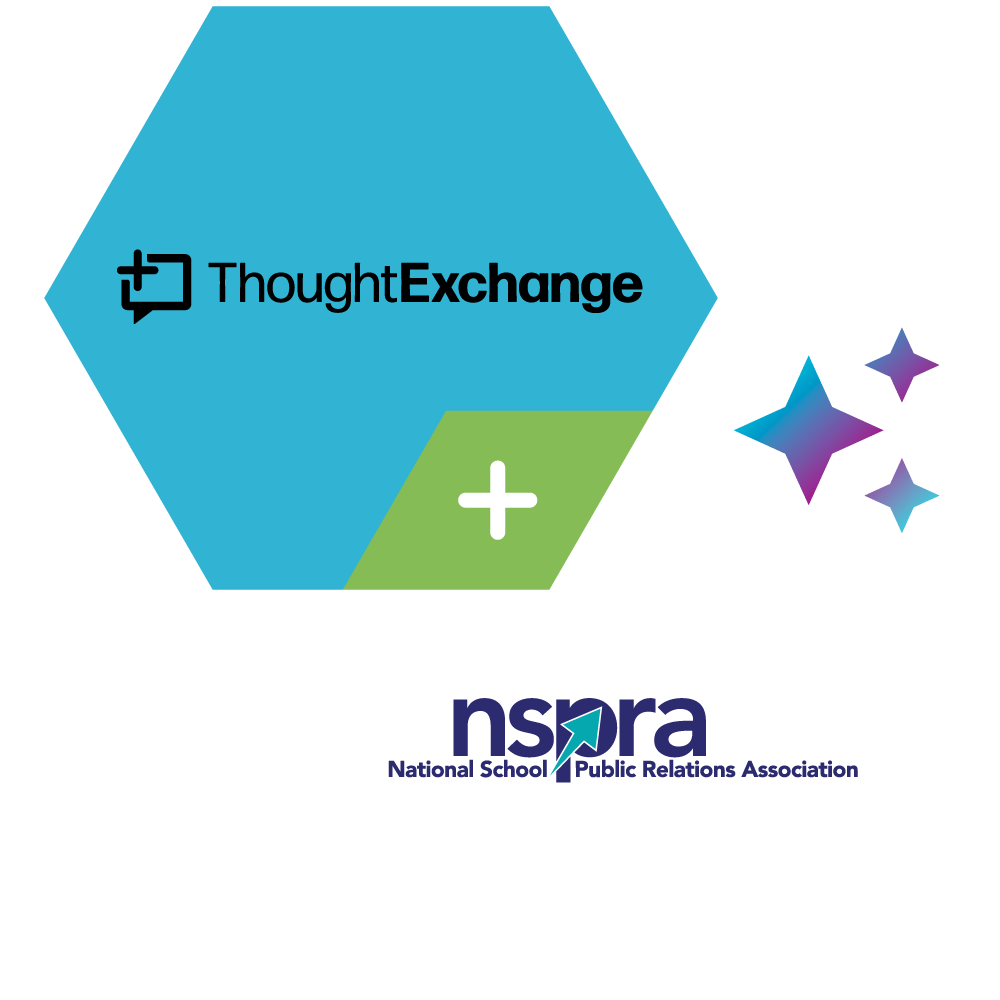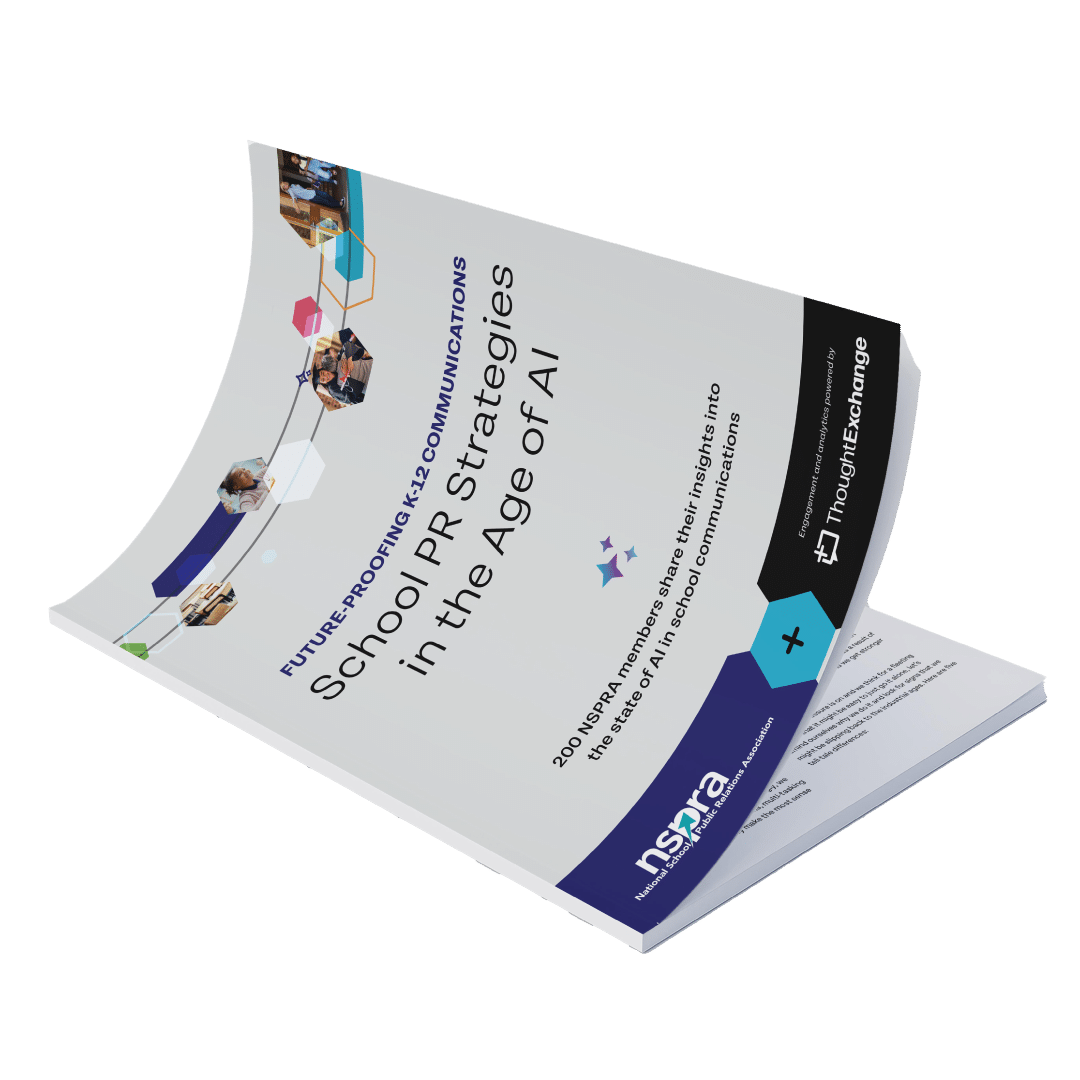
School PR Strategies in the Age of AI
Artificial Intelligence (AI) is rapidly transforming how school districts connect with their communities. From crafting social media posts to drafting press releases, AI tools are becoming indispensable for K-12 communication professionals. But how are these tools being used, and what policies are in place to guide them?
In collaboration with the National School Public Relations Association (NSPRA), ThoughtExchange surveyed 200 NSPRA members from K-12 districts nationwide. We uncovered how they're using AI, their biggest concerns, and how their districts are—or aren't—supporting AI integration.
What you'll learn:
Artificial Intelligence (AI) increasingly influences how school districts communicate with their communities—through emails, social media posts, newsletters, press releases, and communication plans. Despite its growing presence, there is often limited clarity about AI usage, how it shapes messaging, and what effects it may have on clarity, trust, and engagement.
The April 2025 executive order, Advancing Artificial Intelligence Education for American Youth, has accelerated AI adoption across the K-12 education system. It calls for integrating AI not only in classrooms but also in district operations, establishing a federal task force to explore how AI can streamline administrative tasks and enhance school functions.
As AI becomes more embedded in district workflows, the need for clear, districtwide policies to guide responsible use has become increasingly urgent.
While many school districts have taken steps to guide the use of AI in the classroom, most have not extended that same level of oversight to central office operations. This has left school communications professionals navigating AI adoption without consistent guidance on when, how, or why to use these tools in their work.
To better understand the current landscape, ThoughtExchange collaborated with the National School Public Relations Association (NSPRA) to explore how school communicators engage with AI, their concerns, and how districts support—or fail to support—thoughtful integration.
Together, we surveyed 200 NSPRA members working in K-12 districts nationwide. Their insights reveal a clear gap between the widespread use of AI in school public relations and the lack of district policies and professional development to support that use.


